
On Windows 11, if you have had the same setup for a long time or you're experiencing issues like slow performance, battery drain, system crashes, or stubborn malware, the "Reset this PC" feature offers a quick way to fix most problems. This recovery feature allows you to reinstall Windows 11 using a clean system image, either by keeping your files or removing everything to start fresh.
You can choose to restore the system to its factory settings while retaining your personal files and settings, or wipe everything to resolve persistent issues. The feature also gives you the flexibility to use a clean operating system image instead of a manufacturer’s recovery image, helping you avoid preinstalled bloatware and custom configurations.
In this how-to guide, I will walk you through three methods to reset Windows 11 to its factory settings, keeping your files or erasing everything.
How to factory reset Windows 11 preserving files
To reset a Windows 11 laptop or desktop to its factory default settings without losing your files, use these steps:
- Open Settings.
- Click on System.
- Click the Recovery page on the right side.

- Click the Reset PC button for the "Reset this PC" feature under the "Recovery options" section.
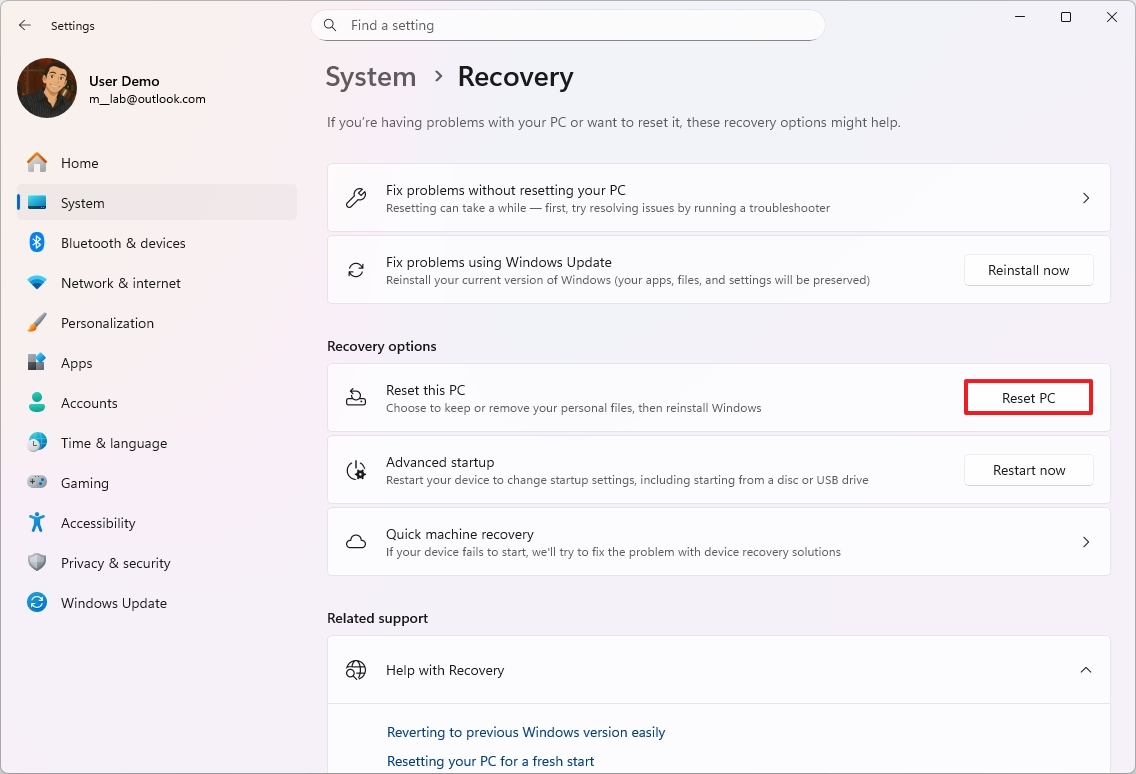
- Click the "Keep my files" option.

- Select the reset method:
- Cloud download: Gets a fresh copy of the installation files from the Microsoft servers and reinstalls Windows 11. However, this option won't restore the tools, apps, custom drivers, and configuration that may have come with the original image provided by the manufacturer.
- Local reinstall: Uses the files locally available to reset the computer. This process will restore the factory drivers, settings, and tools if this is a branded device (such as Dell, ASUS, Lenovo, etc.).
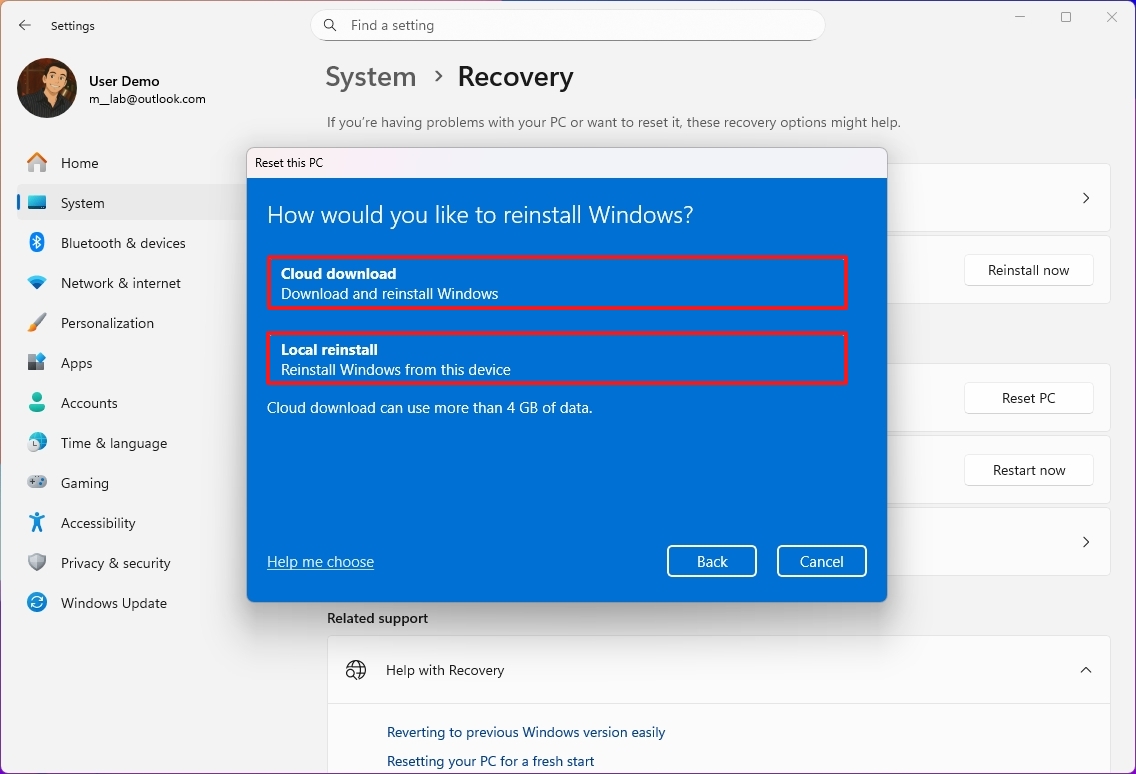
- Review the apps to reinstall after the reset to factory settings.
- Click the Next button.
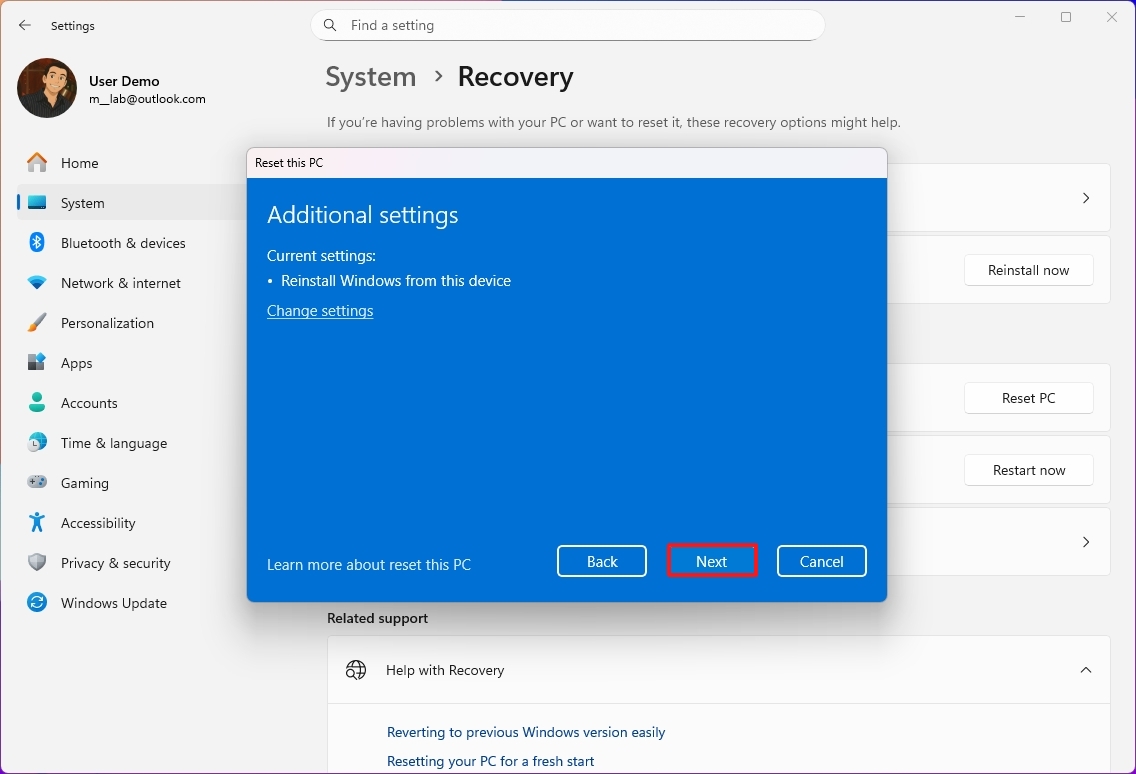
- Click the Reset button.
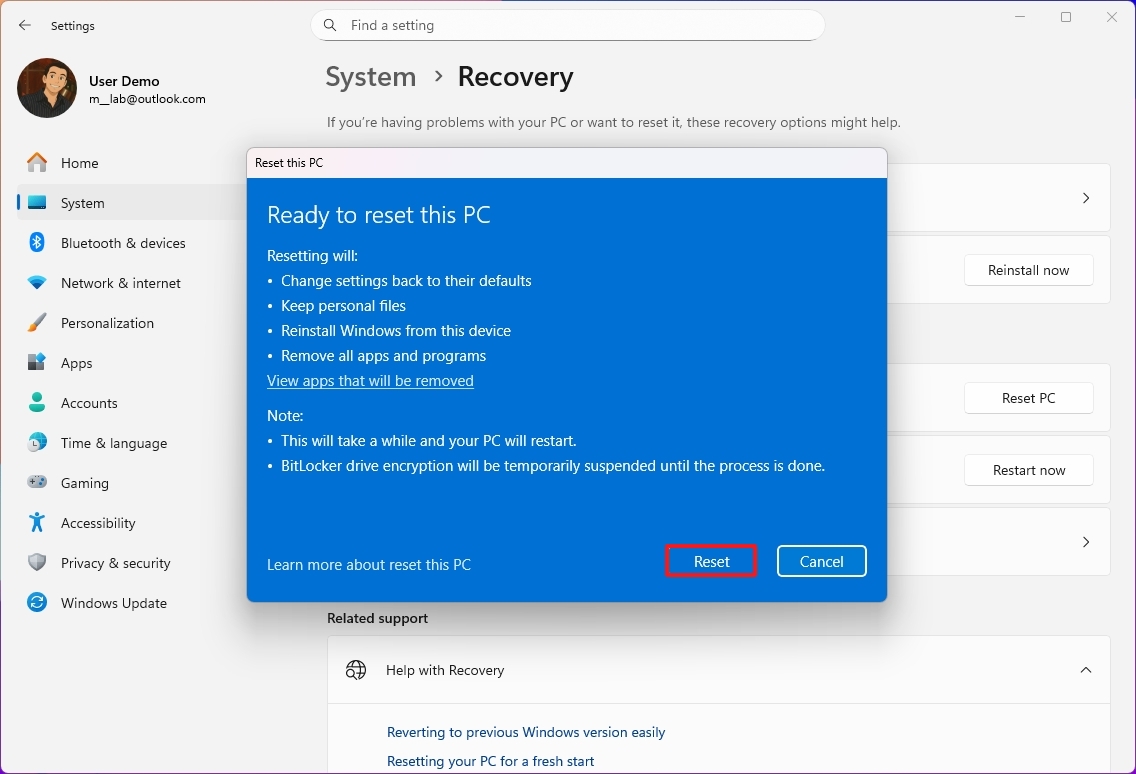
Once you complete the steps, the laptop or desktop computer will reset to the factory settings, preserving your files.
After factory reset
After the reset, it's a good idea to check for updates to ensure the setup does not miss any security patches or drivers. Also, you may need to reinstall any of your previous applications as necessary.
Check for updates
To install updates for Windows 11, use these steps:
- Open Settings.
- Click on Windows Update.
- Click the "Check for updates" button.
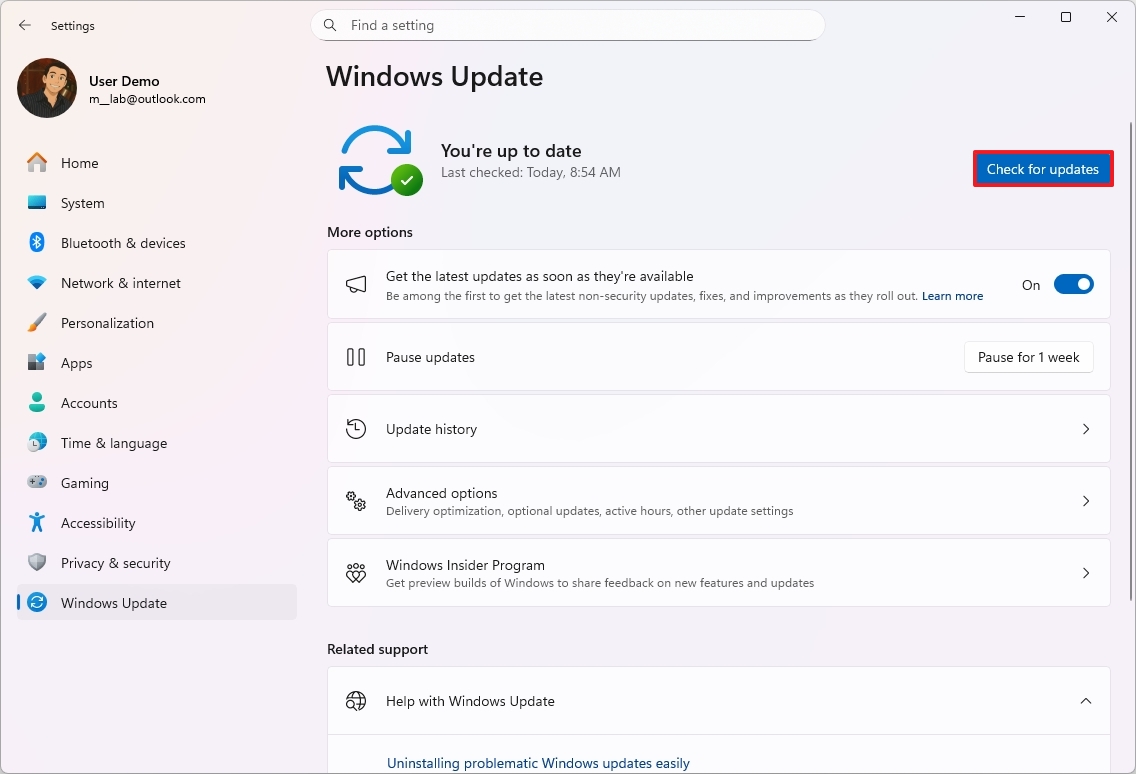
Once you complete the steps, Windows Update will download the latest patches and driver updates (if available).
Check for missing drivers
To check for missing drivers after completing the reset of Windows 11, use these steps:
- Open Start.
- Search for Device Manager and click the top result to open the app.
- Confirm that there's no branch called "Other devices," which usually lists devices without drivers.

If you have one or more devices missing, check the computer manufacturer's support website to download and install the latest drivers available.
The last thing left to do is reinstall any previously installed app on your computer (if applicable).
How to factory reset Windows 11 using remove everything option
To use the reset feature removing everything on a computer that you use for working at home or gaming, use these steps:
- Open Settings.
- Click on System.
- Click the Recovery page on the right side.

- Click the Reset PC button for the "Reset this PC" feature under the "Recovery options" section.

- Click the Remove everything option.

- Select the Cloud download or Local reinstall, depending on how you want to reset the system.

- (Optional) Click the Change settings option.
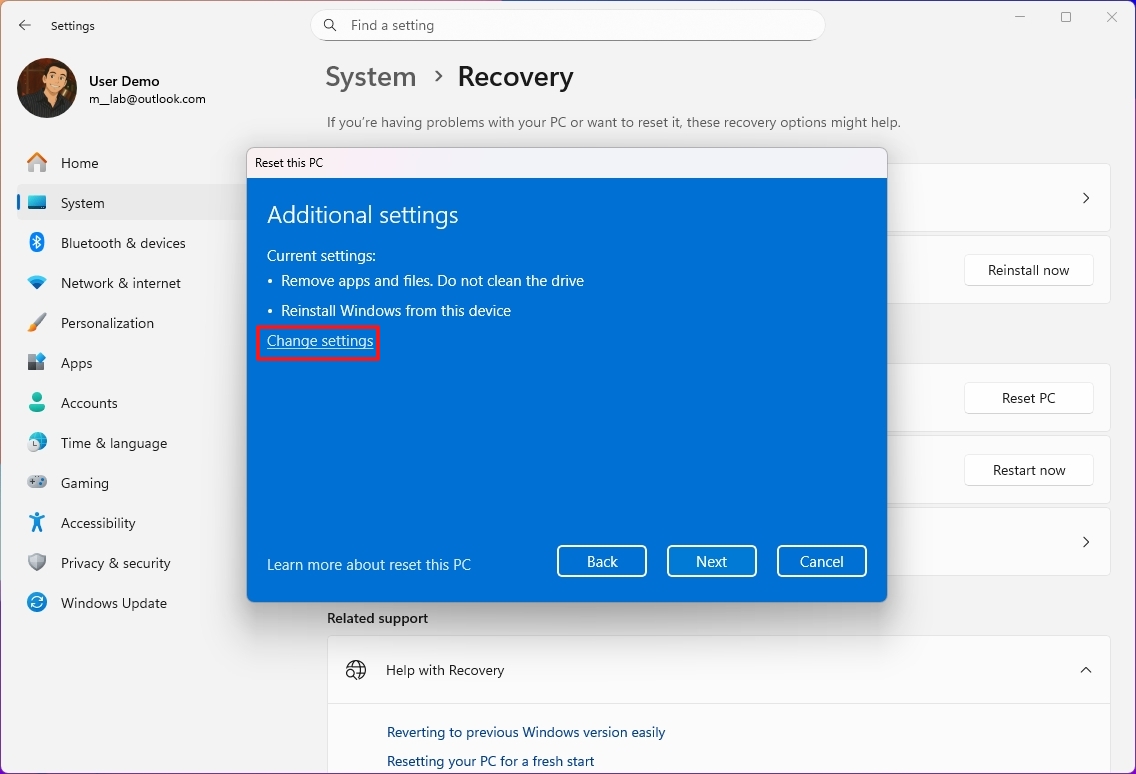
- Turn on the "Data erasure toggle" switch.
- Quick note: Only use this option to prepare the computer to get rid of it. Otherwise, the default reset settings are recommended if you are trying to refresh the installation.
- Turn on the Data drives toggle switch to erase the Windows 11 installation drive and any other storage drive connected to your computer (if applicable).
- Click the Confirm button.
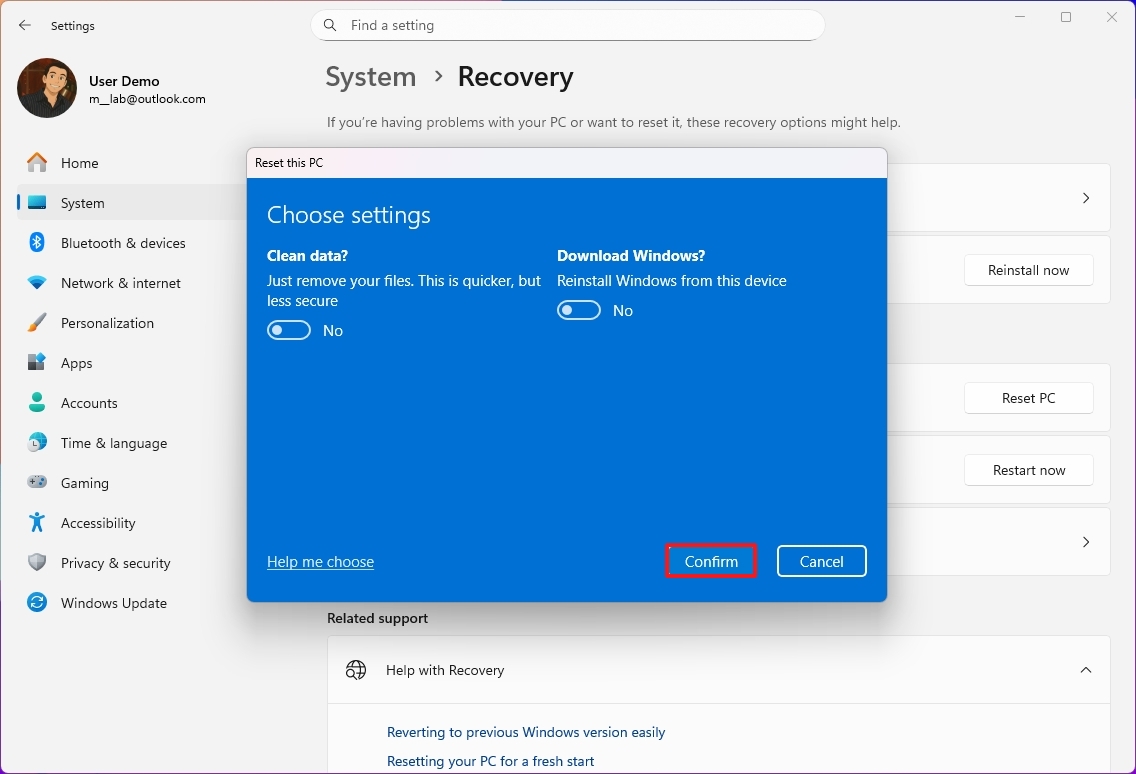
- Review the apps to reinstall after the reset to factory settings.
- Click the Next button.
- Click the Reset button.

After you complete the steps, the process will erase the drives, depending on your configuration, and install a clean copy of the operating system.
After factory reset
If you plan to sell or get rid of the computer, you don't need to do anything else. However, if you plan to start over with the computer, there are some extra steps, including checking for updates and missing drivers, and reinstalling your apps and restoring your files from backup.
Checking for updates
To install updates for Windows 11, use these steps:
- Open Settings.
- Click on Windows Update.
- Click the "Check for updates" button.

Once you complete the steps, Windows Update will download and install any missing updates and drivers (if available).
Check for missing drivers
To check for missing drivers after the "Reset this PC," use these steps:
- Open Start.
- Search for Device Manager and click the top result to open the app.
- Confirm that there's no branch called "Other devices," which usually lists devices without drivers.

If you have components without drivers, check the computer manufacturer support website to download and install the latest drivers available.
Restore files from backup
If you have a backup of your files, now is the time to restore them. The recovery process will be different depending on the file backup method.
For instance, if you use OneDrive, the files may already be syncing on your device. However, if not, you may need to reconfigure the app one more time.
If you backed up your files manually to an external drive, connect the portable drive and use these steps:
- Open File Explorer.
- Click on This PC from the left pane.
- Double-click the storage with the file backup under the "Devices and drives" section.
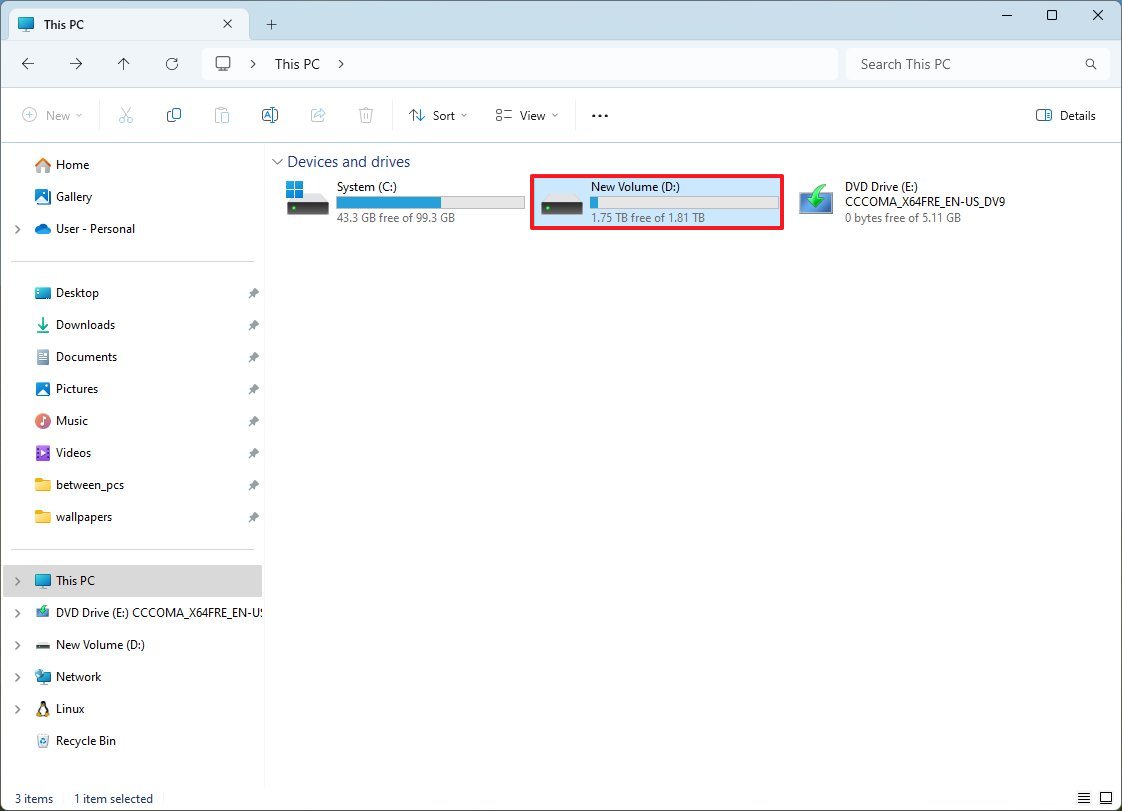
- Select the files and folders.
- Click the Copy button.

- Open the destination folder.
- Click the Paste button from the command bar.
Once you complete the steps, you may need to repeat the steps to restore additional files. If you are missing one or more apps, now is the time to install them.
More resources
For more helpful articles, coverage, and answers to common questions about Windows 10 and Windows 11, visit the following resources:
- Windows 11 on Windows Central — All you need to know
- Windows 10 on Windows Central — All you need to know
How to factory reset Windows 10 using keep my files option
Although Windows 10 is a reliable operating system, you can encounter many problems over time. You may have issues with starting up or shutting down, excessive memory usage, performance running apps, and battery draining quickly, among many other issues, and when any of this happens, resetting to factory settings will come in handy.
If you experience persistent performance issues, Windows 10 has various recovery options to reset the system to the factory settings keeping or removing your files to resolve common problems and improve performance. You even have the option to download and use the original Windows image instead of the custom manufacturer recovery image that may contain bloatware and settings you don't need.
This guide will walk you through how to reset your computer to its factory settings without your files or erasing everything on Windows 10.
To reset Windows 10 to the factory default settings without losing your files, use these steps:
- Open Settings.
- Click on Update & Security.
- Click on Recovery.
- Under the "Reset this PC" section, click the Get started button.
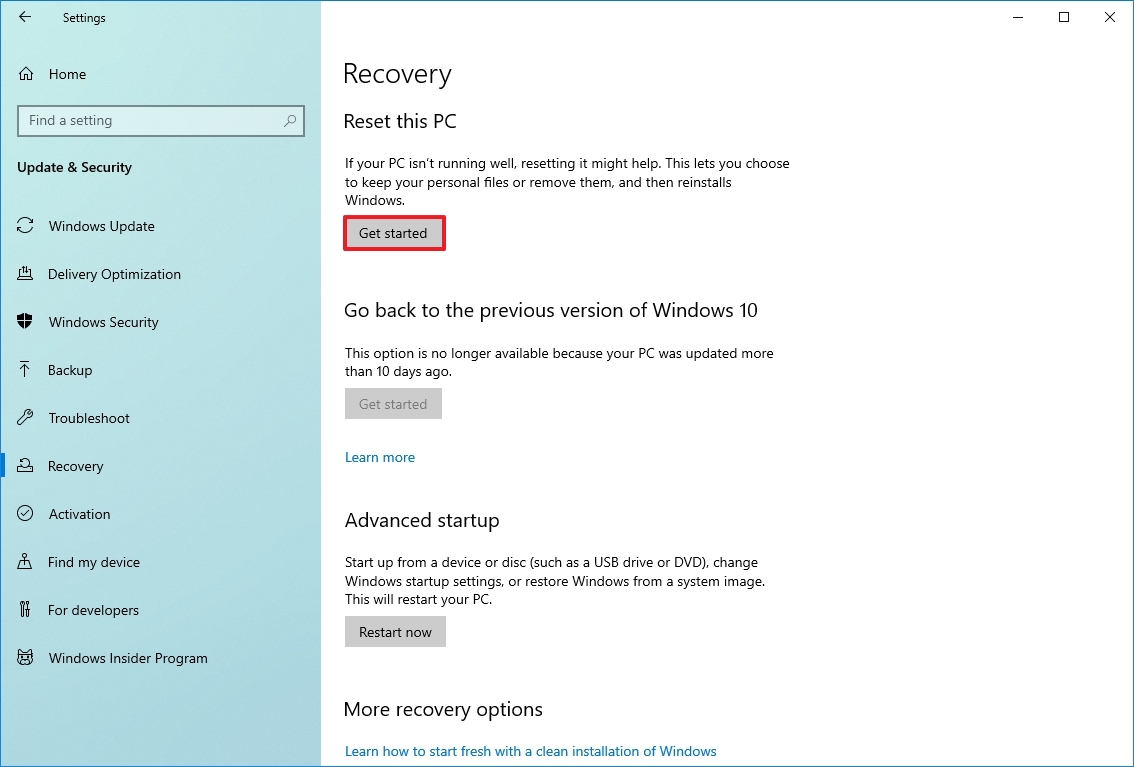
- Click the "Keep my files" option.
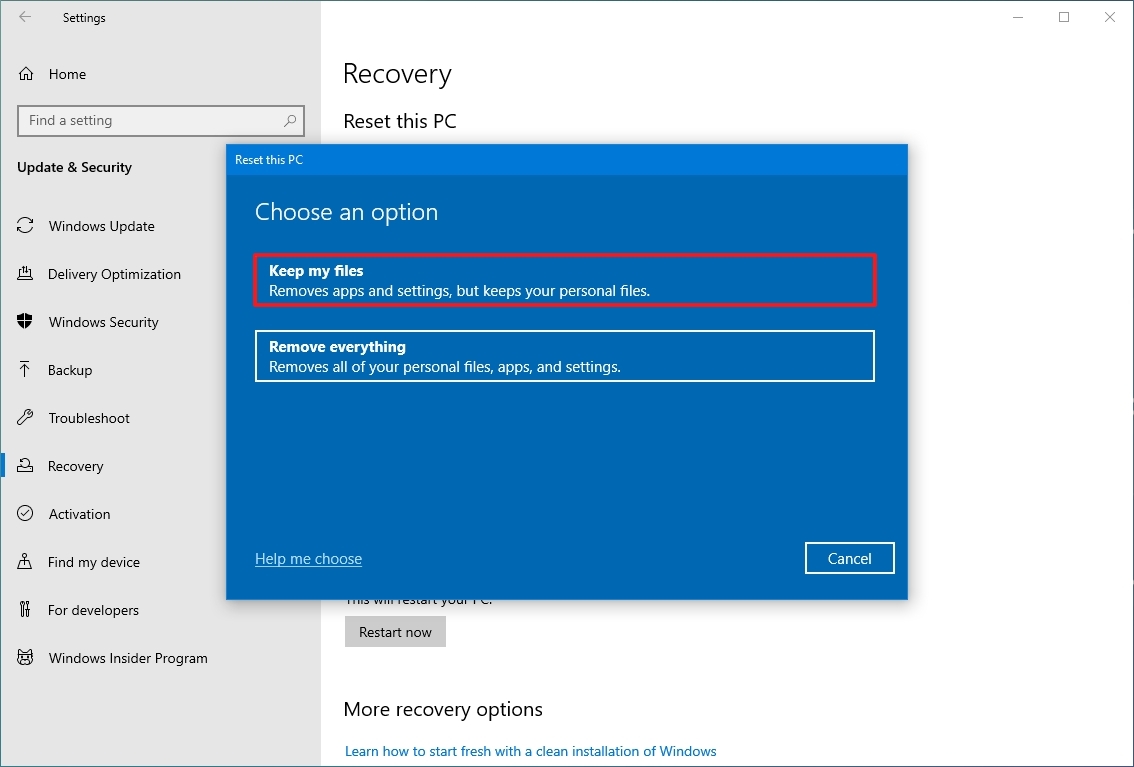
- Choose the Windows 10 reset option:
- Cloud download: Download a fresh copy of the installation from the cloud and reinstall Windows 11. However, this option will not restore the tools, apps, and configuration that came with the original image provided by the manufacturer.
- Local reinstall: Uses the files already available to reset the computer. If this is a branded device (such as Dell, ASUS, Lenovo, etc.), this process will restore the factory drivers, settings, and tools.
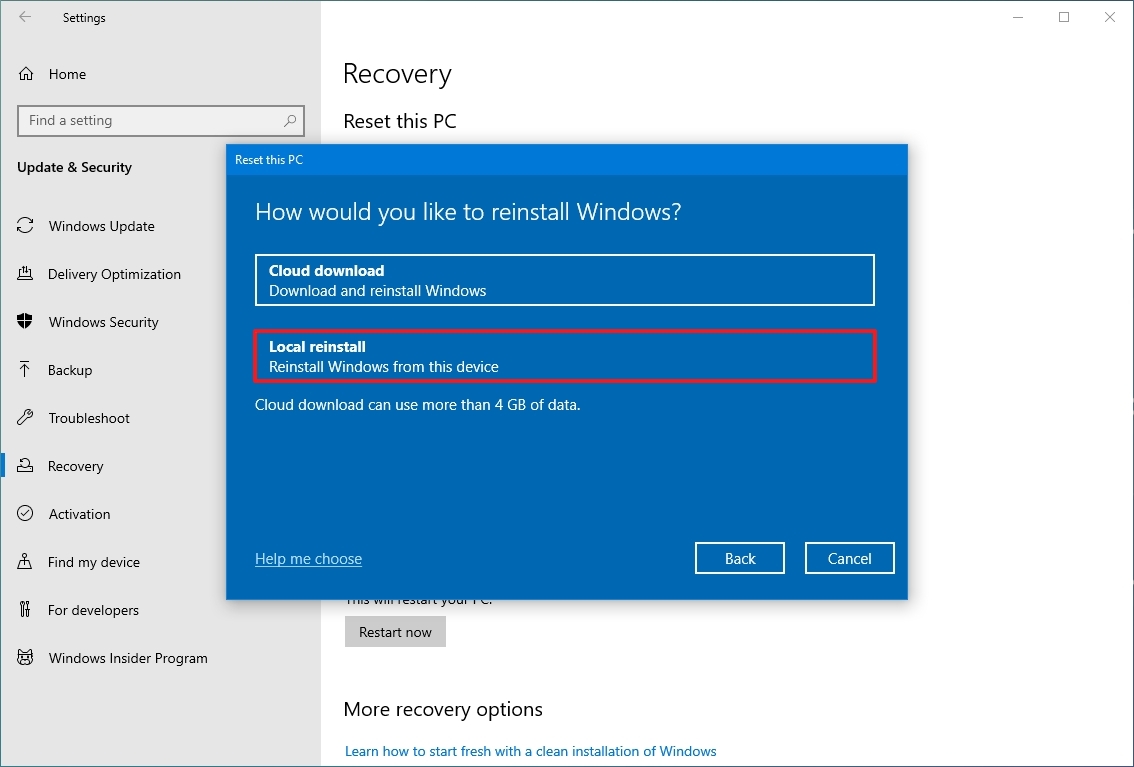
- Click the Next button.
- Check the apps you'll need to reinstall after resetting factory settings.
- Click the Reset button.
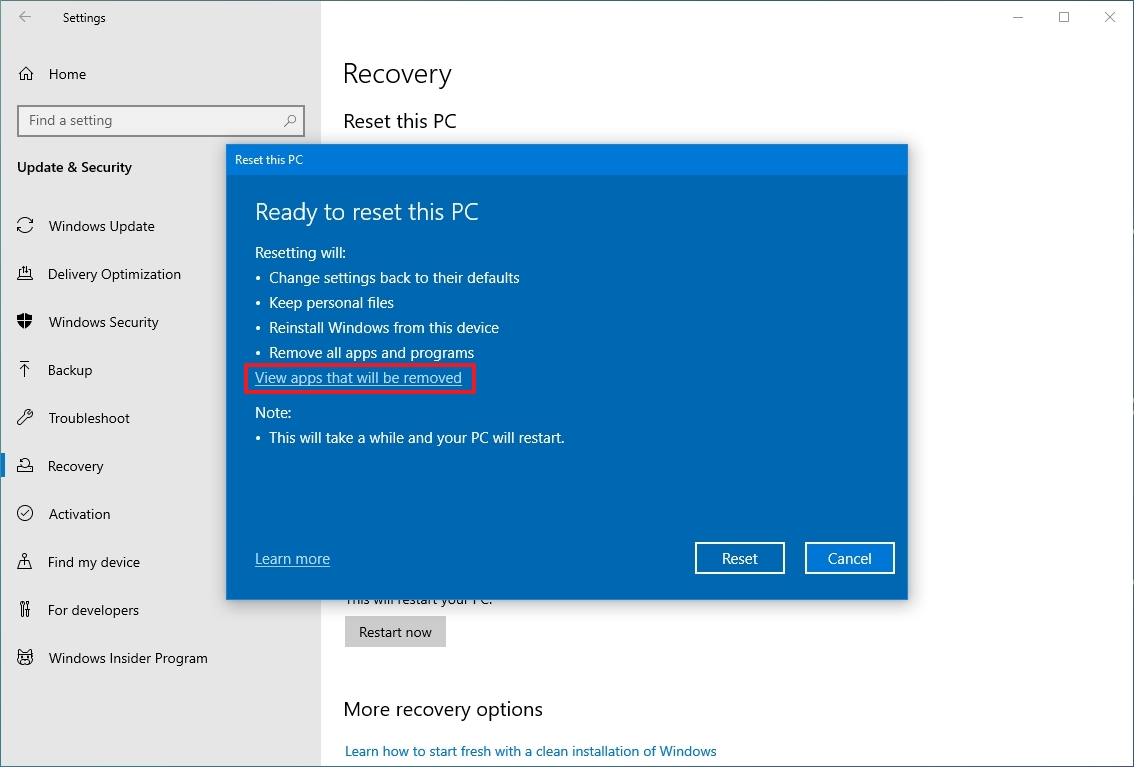
Once you complete the steps, the device will reset to the factory settings preserving your files during the process.
After factory reset steps
After the reset completes, you'll still need to check for updates to ensure that Windows 10 isn't missing any security, patches, or drivers, and you'll need to reinstall some apps.
Check for updates
To install updates for Windows 10, use these steps:
- Open Settings.
- Click on Update & Security.
- Click on Windows Update.
- Click the Check for updates option.
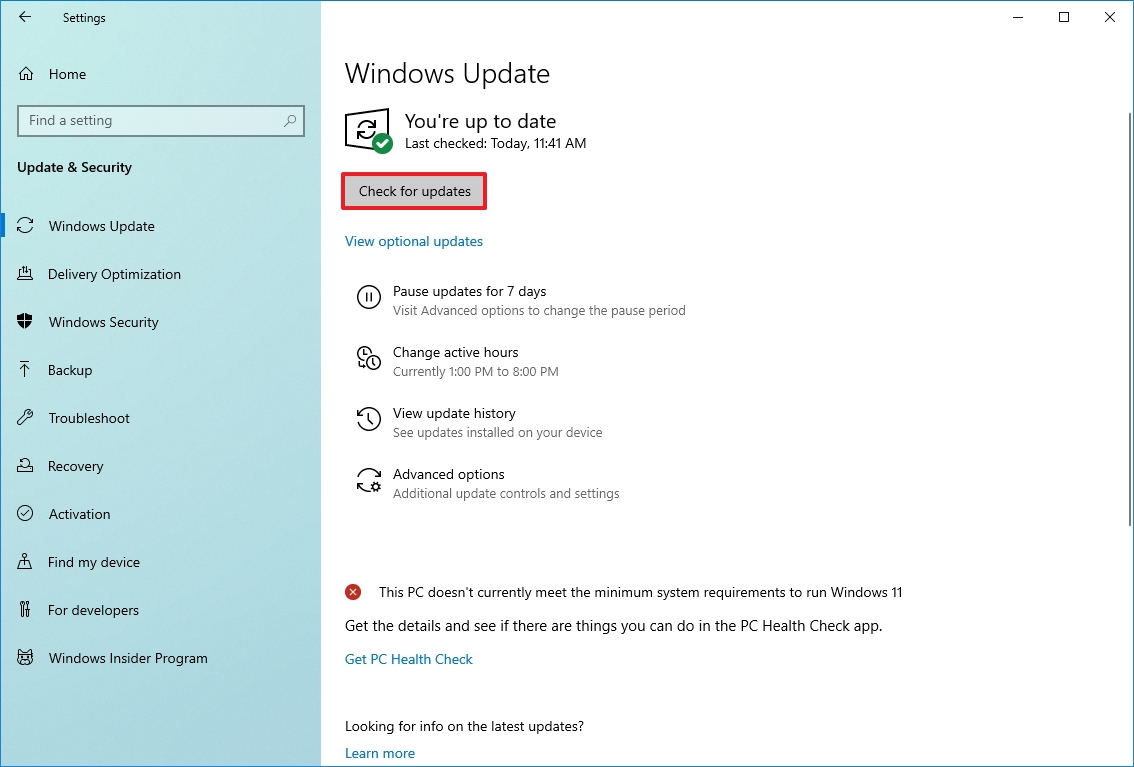
Once you complete the steps, Windows Update will download and install any missing updates and drivers (if available).
Check for drivers
To check for missing drivers after reset, use these steps:
- Open Start.
- Search for Device Manager and click the top result to open the tool.
- Confirm that there's no branch called "Other devices," which usually lists any missing device driver.
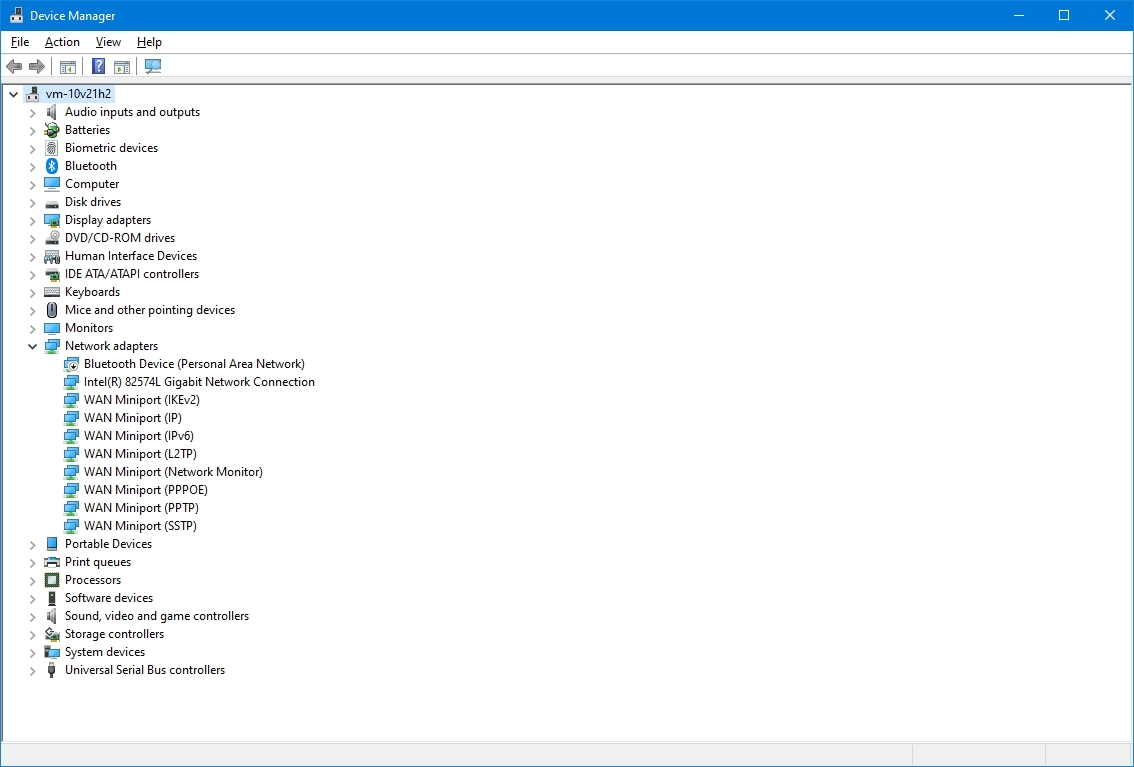
If you have one or more devices with missing drivers, you can use these instructions to update the components.
The last thing left is to reinstall any previously installed app on your computer (if applicable).
How to factory reset Windows 10 using remove everything option
To use the reset feature to remove everything on a computer, use these steps:
- Open Settings.
- Click on Update & Security.
- Click on Recovery.
- Under the "Reset this PC" section, click the Get started button.

- Click the Remove everything option.
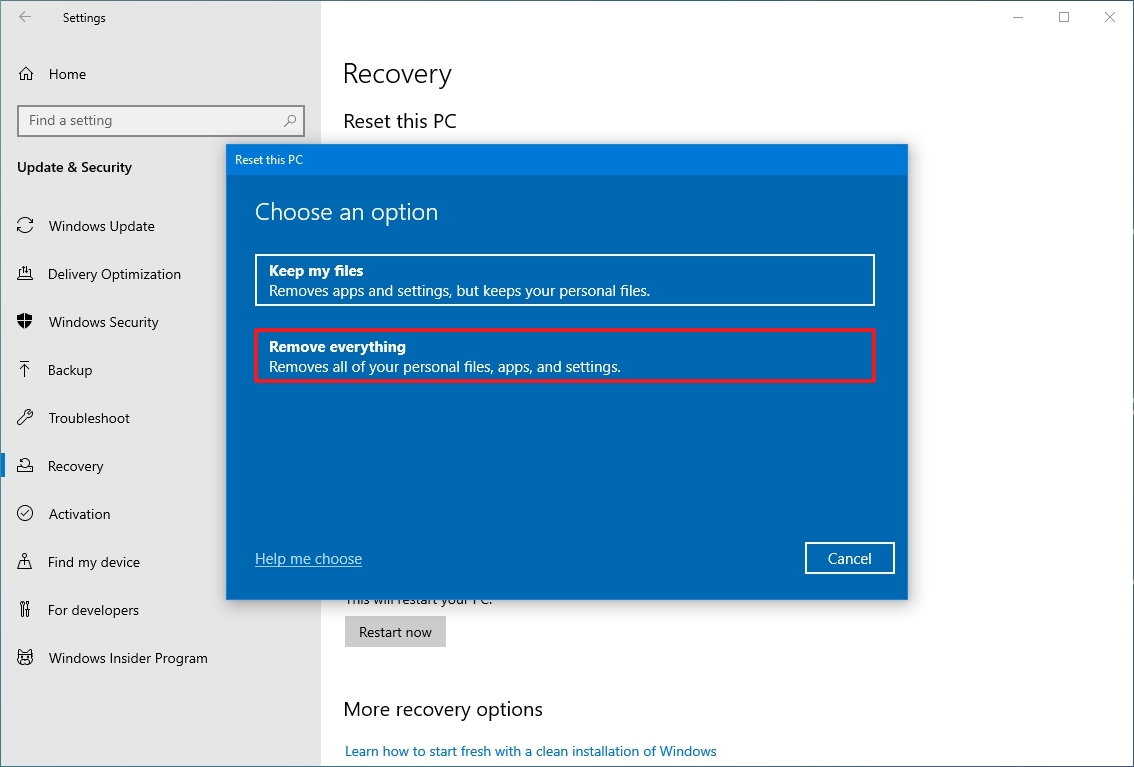
- Choose the Windows 10 reset option:
- Cloud download: Download a fresh copy of the installation from the cloud and reinstall Windows 11. However, this option will not restore the tools, apps, and configuration that came with the original image provided by the manufacturer.
- Local reinstall: Uses the files already available to reset the computer. If this is a branded device (such as Dell, ASUS, Lenovo, etc.), this process will restore the factory drivers, settings, and tools.

- (Optional) Click the Change settings option.
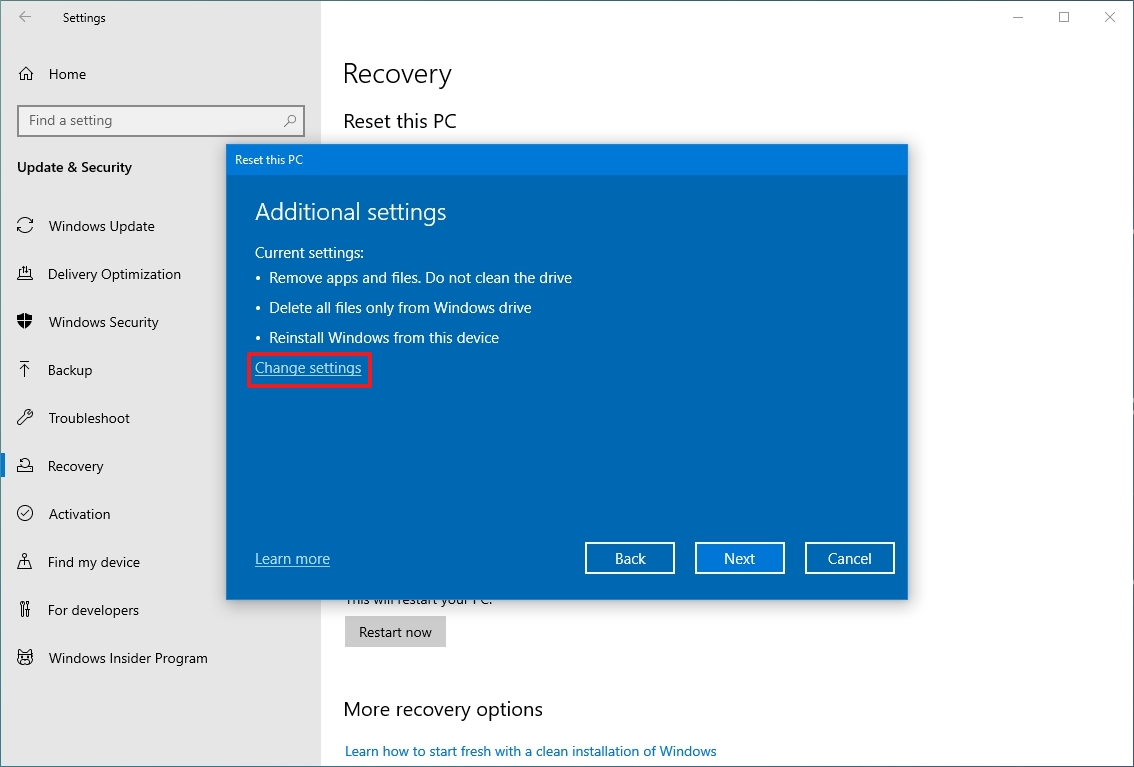
- (Optional) Turn on the "Delete files from all drives" toggle switch if you have multiple drives and you only want to erase the installation storage.
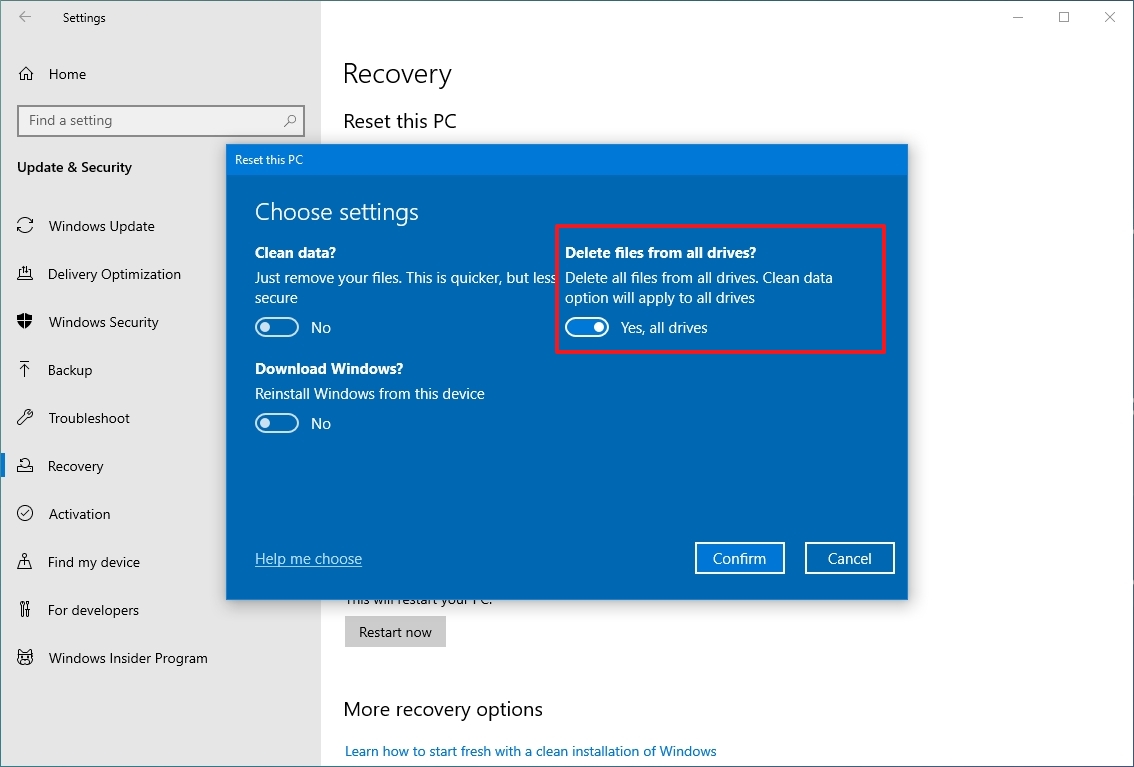
- Click the Confirm button.
- (Optional) Click the "Show me the list of drives that will be affected" option to see drives that will be erased during the reset process.
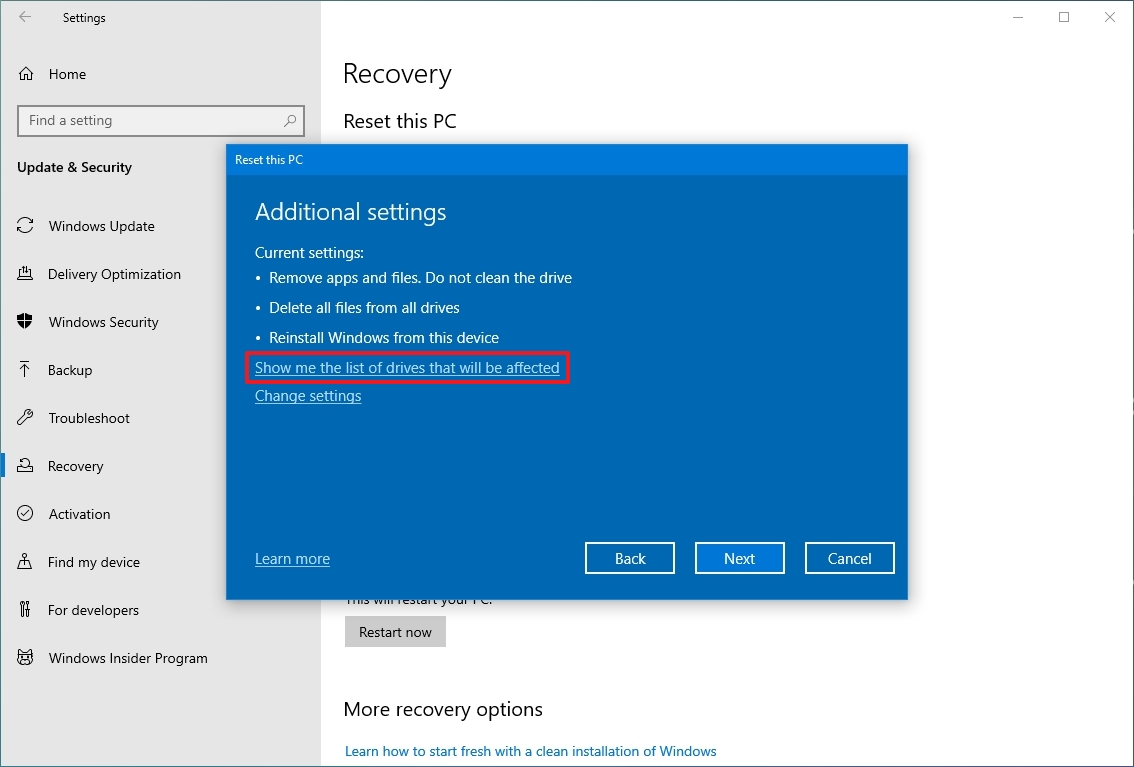
- Click the Back button.
- Click the Next button.
- Click the Reset button.
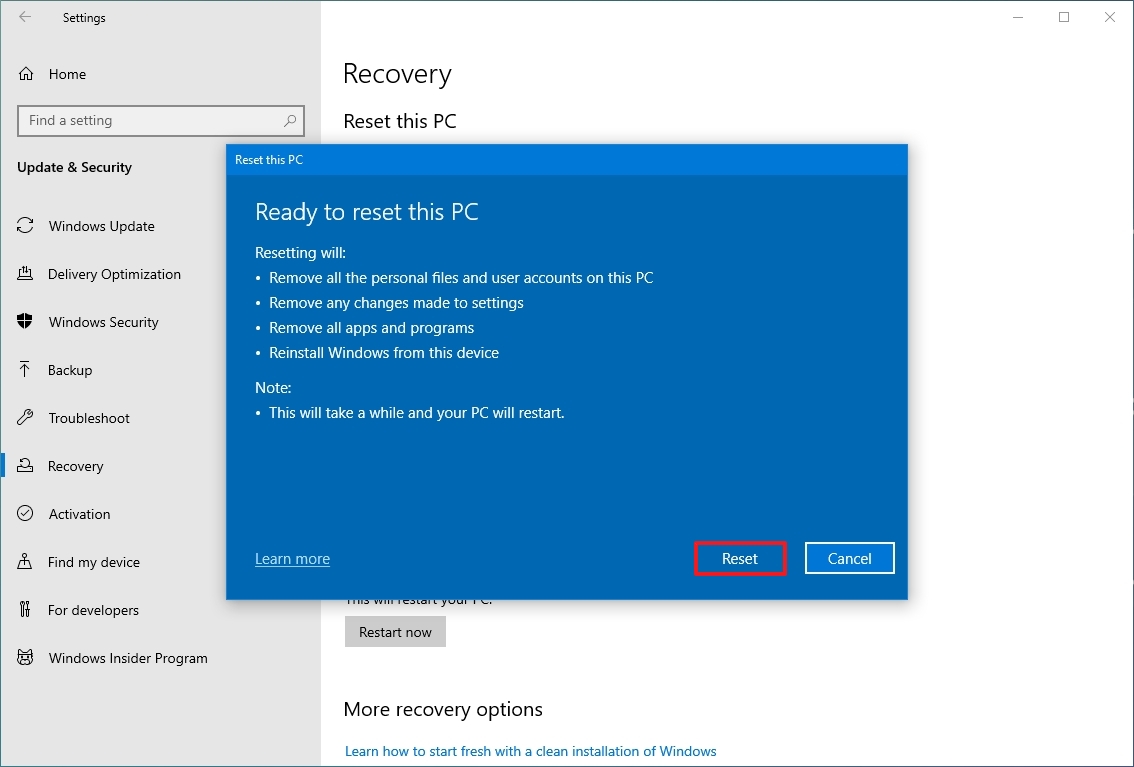
After you complete the steps, the wizard will wipe out the system drives, depending on your selection, and it'll reinstall a fresh copy of Windows 10, restoring the factory settings.
After factory reset steps
If you're preparing to make some extra money selling your computer, there's nothing else you need to do. However, if you're refreshing the device to start over with a clean installation, you'll still need to check for updates, make sure none of the drivers are missing, reinstall apps, and restore your files from a previous backup.
Checking for updates
To install updates for Windows 10, use these steps:
- Open Settings.
- Click on Update & Security.
- Click on Windows Update.
- Click the Check for updates option.
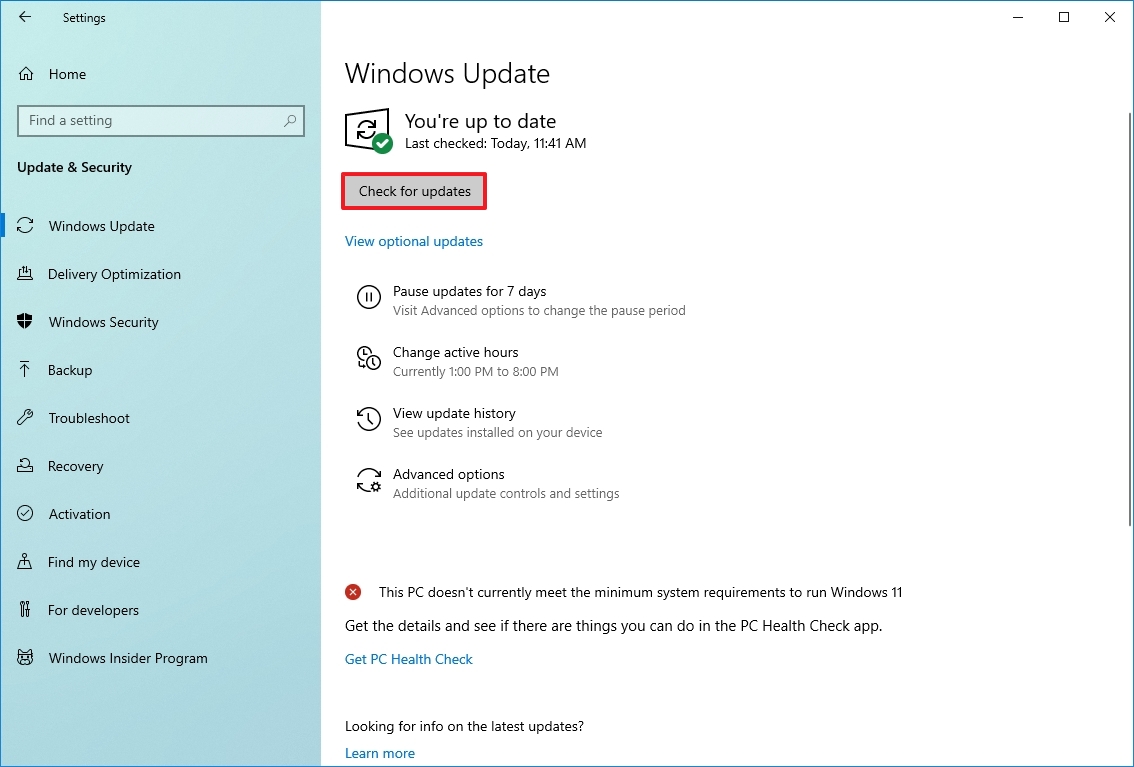
Once you complete the steps, Windows Update will download and install any missing updates and drivers (if available).
Check for drivers
To check for missing drivers, use these steps:
- Open Start.
- Search for Device Manager and click the top result to open the tool.
- Confirm that there's no branch called "Other devices," which usually lists missing device drivers.

If you have one or more devices with missing drivers, you can use these instructions to update the components.
Restore personal files
Lastly, you want to restore your files from the backup. The process will depend on your chosen method to create the file backup.
If you're using OneDrive to back up your files, the files may already be syncing in the background. However, if they're not, you may need to reconfigure the app again.
If you created a copy of your files on an external drive, connect the drive to your computer, and use these steps:
- Open File Explorer.
- Click on This PC from the left pane.
- Under the "Devices and drives" section, double-click the storage with the file backup.
- Select the files and folders.
- Click the Copy to button from the "Home" tab.
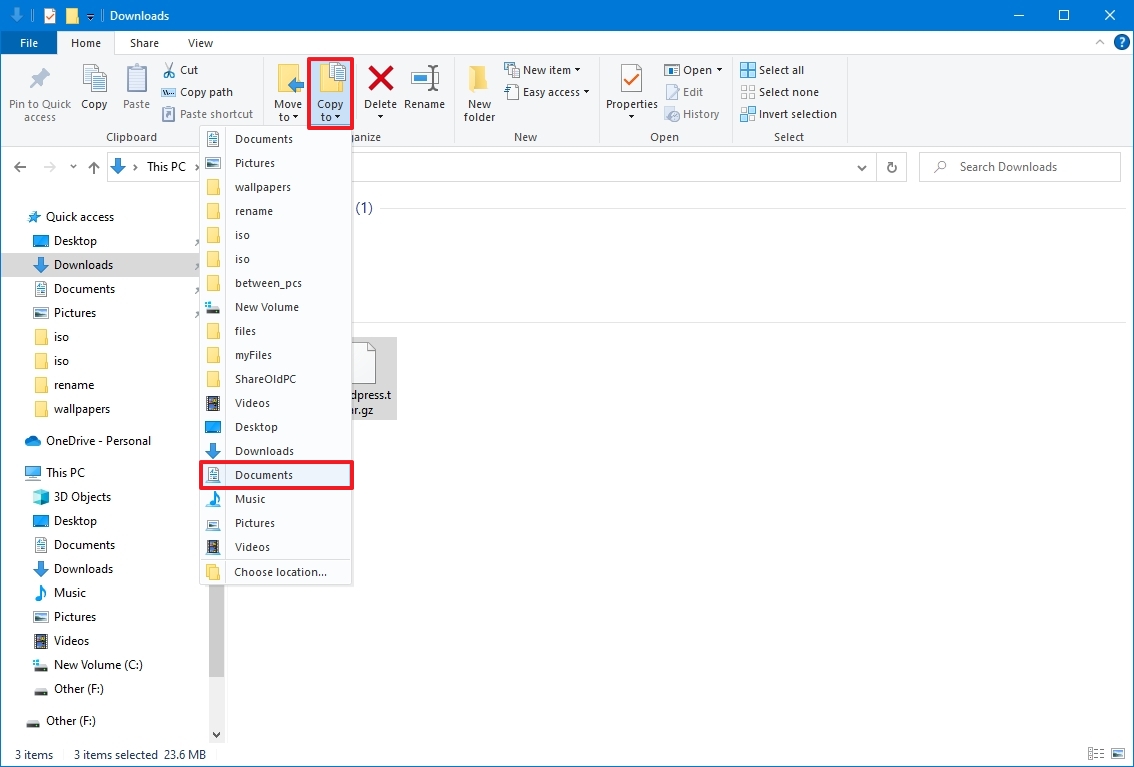
- Select the destination folder.
- Quick tip: You can select the Choose location option to choose another folder.
Once you complete the steps, you may need to repeat the steps to restore additional files.
Finally, make sure to reinstall any app that was previously available on your computer (if applicable).
This guide focuses on using the built-in reset tools, but you can also perform a clean installation of Windows 10 to reset your computer to the factory default settings.
More resources
For more helpful articles, coverage, and answers to common questions about Windows 10 or Windows 11, visit the following resources:







